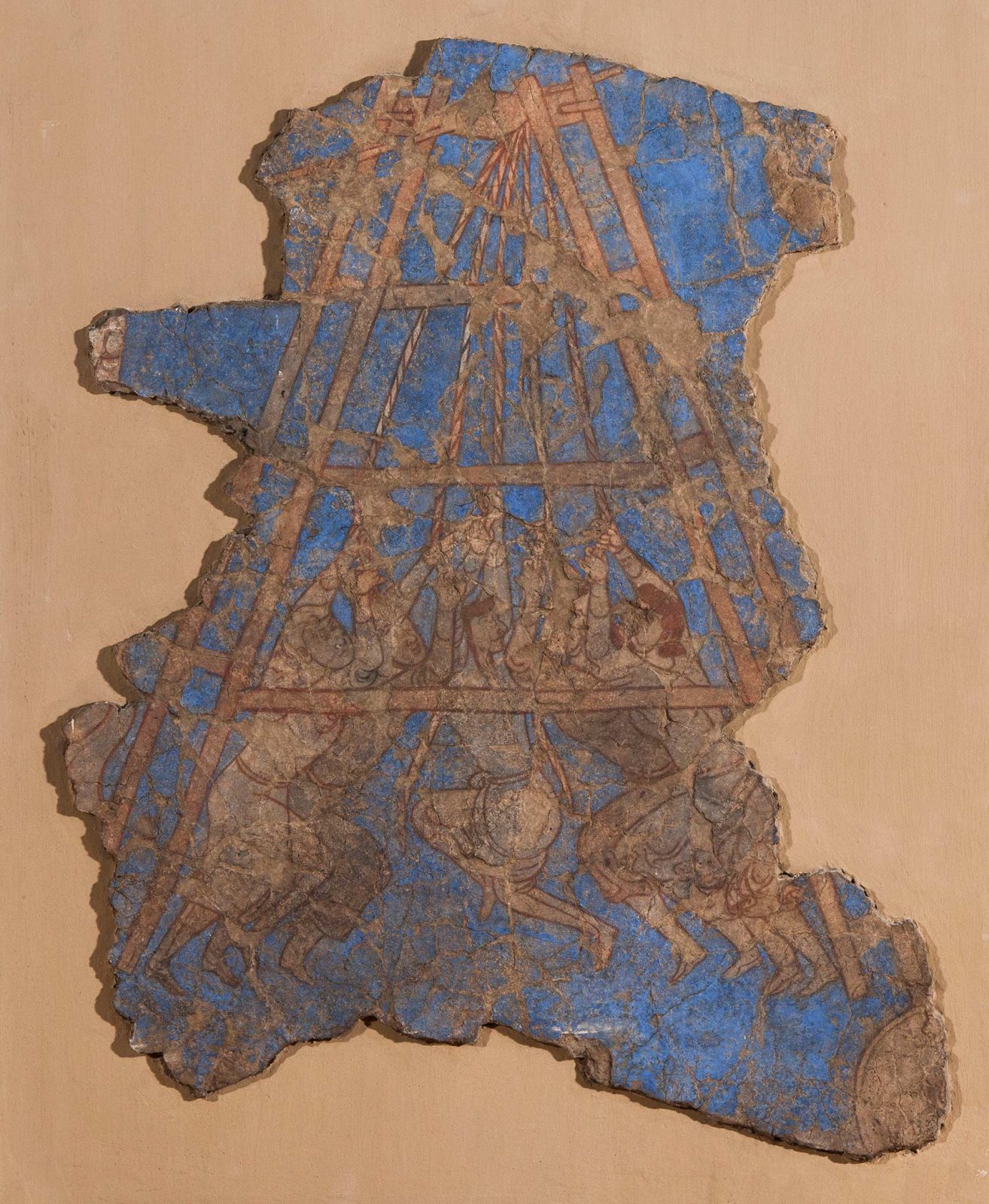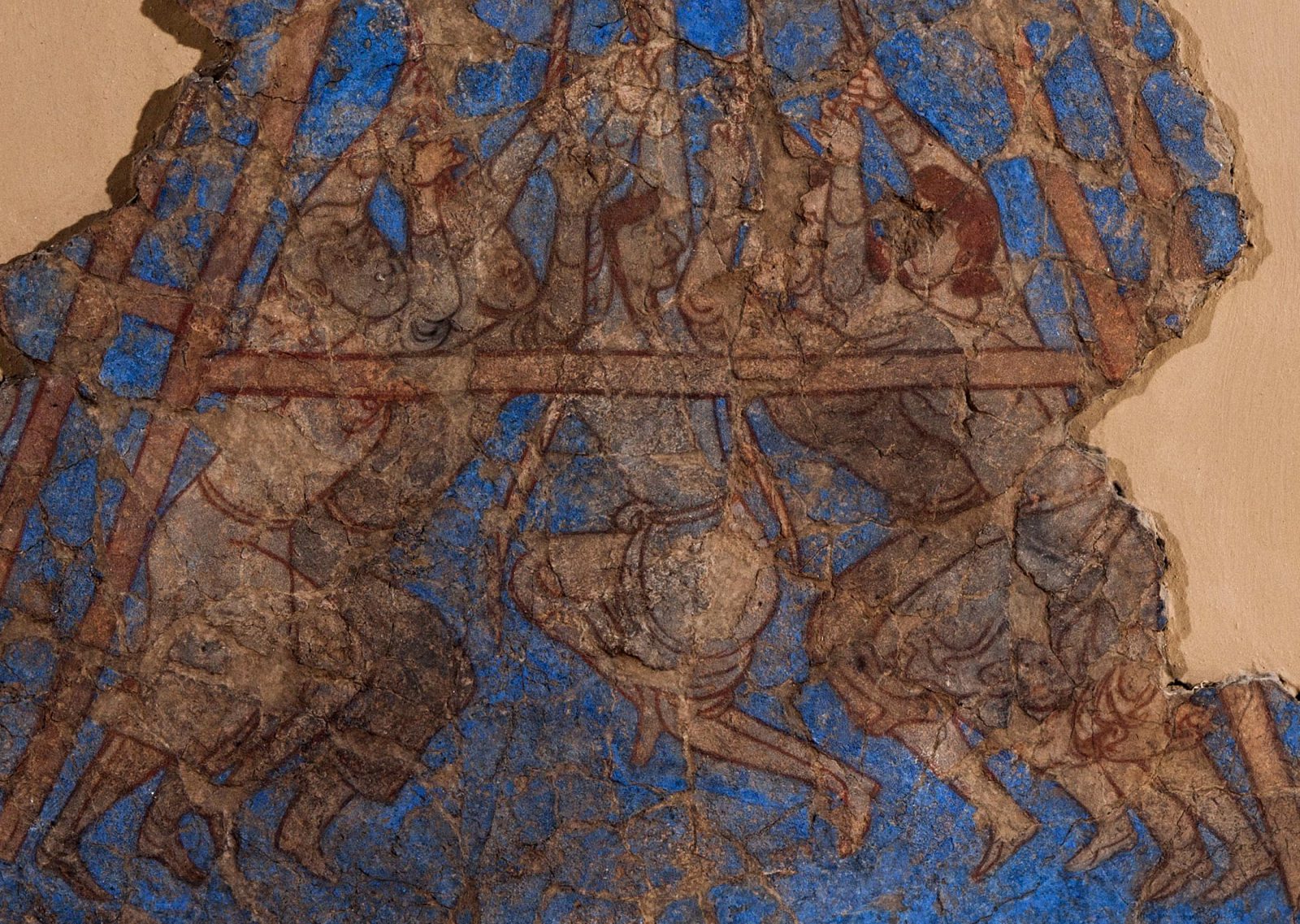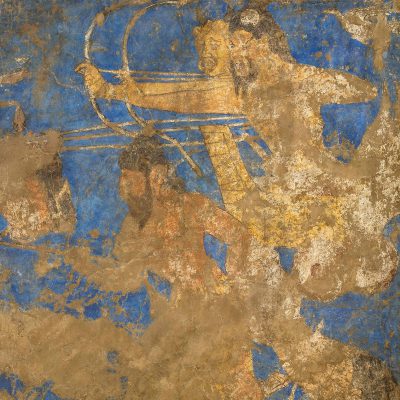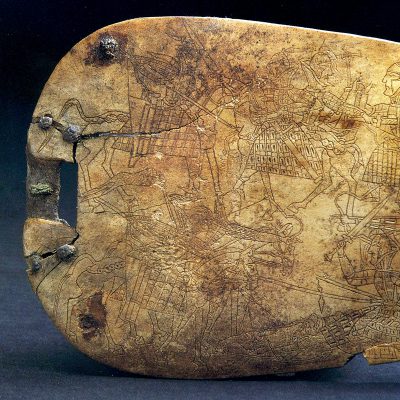
Siege of a Sogdian City
Siege of a Sogdian City
Panjikent Citadel , Room 5, painted between 711 and 721 CE
Wall painting; H. 78 × W. 63 cm
The State Hermitage Museum, SA-16227
Photograph © The State Hermitage Museum
From a series of episodes painted on a wall of the throne room in Panjikent’s palace within the citadelThe City of Panjikent and Sogdian Town-Planning Learn more about Panjikent and Sogdian town-planning, this fragment depicts part of a siege prior to the storming of a city. Against a vivid, lapis-blue background with few or no ground lines to anchor them, five men pull downward on the ropes of a machine known as a traction trebuchet or mangonel. This siege apparatus used the torsion of ropes attached to a throwing arm to hurl projectiles. Of Chinese origin, the technology of the mangonel made its way via the Silk Roads to Europe, where armies would utilize it in medieval wars. This Sogdian painting is the earliest known depiction of this type of siege machine in action.
The painting highlights the concern for accuracy and realistic detail that is one characteristic of Sogdian art. In working the mangonel by pulling downward, the men are hoisted into the air by the heavy weight of the stone they are about to hurl—an amusing image, perhaps, but an accurate one; Fig. 1. The men wear long, white shirts that are comparable to the dress that a turbaned man wears in another painted fragment from the same room. The turban and the way he wears his sword belt identify him as an Arab. Russian scholars Aleksandr M. Belenitsky and Boris I. MarshakBoris Marshak Learn more about the Russian scholar Boris Marshak, however, thought the mangonel operators were mawali, Islamic convert mercenaries. Whatever their identification, these men may be part of an Arab army besieging a Sogdian city—most likely Samarkand, which was taken in 711.
The refurbishment of the palace occurred under Panjikent’s last Sogdian ruler, Devastich, sometime in the first quarter of the 8th century CE. Shortly thereafter, under Arab attack, Devastich and his supporters fledThe Castle on Mount Mugh and Its Documents Learn more about Mount Mugh to Mount Mugh , where they were defeated in 723.
by Judith A. Lerner
Pavel Lurje [Lur’e] and Kira Samosyuk, eds., Expedition Silk Road—Journey to the West: Treasures from the Hermitage (Amsterdam: Hermitage Amsterdam 2014), 187, no. 114.



